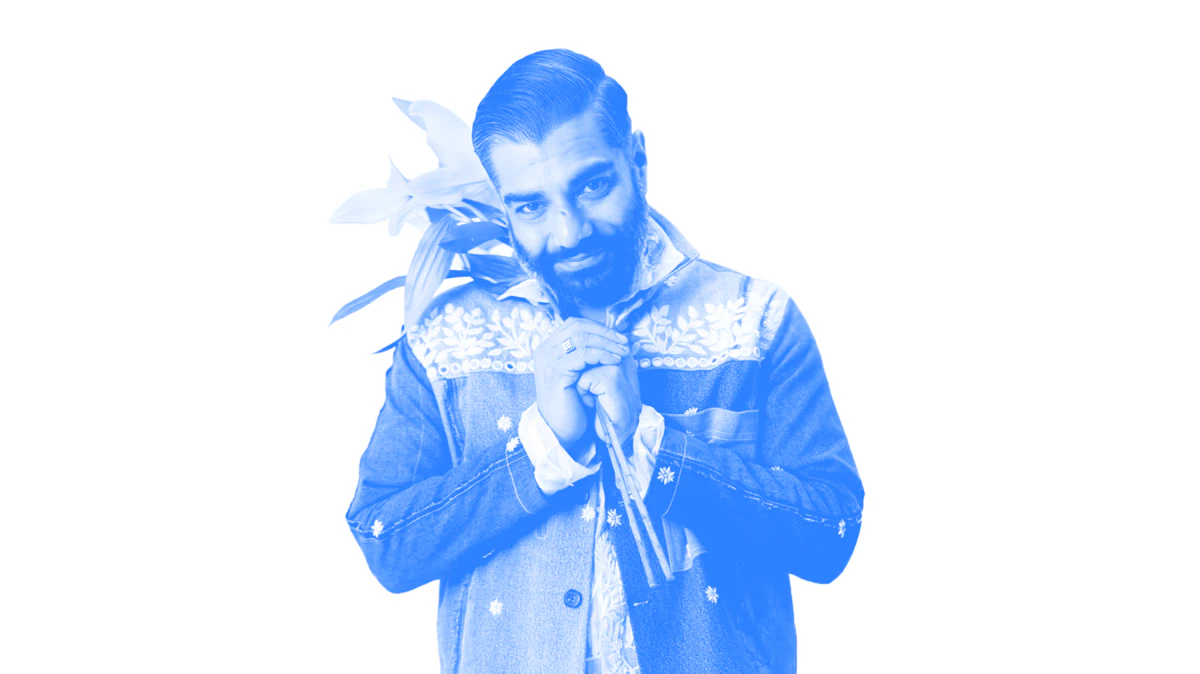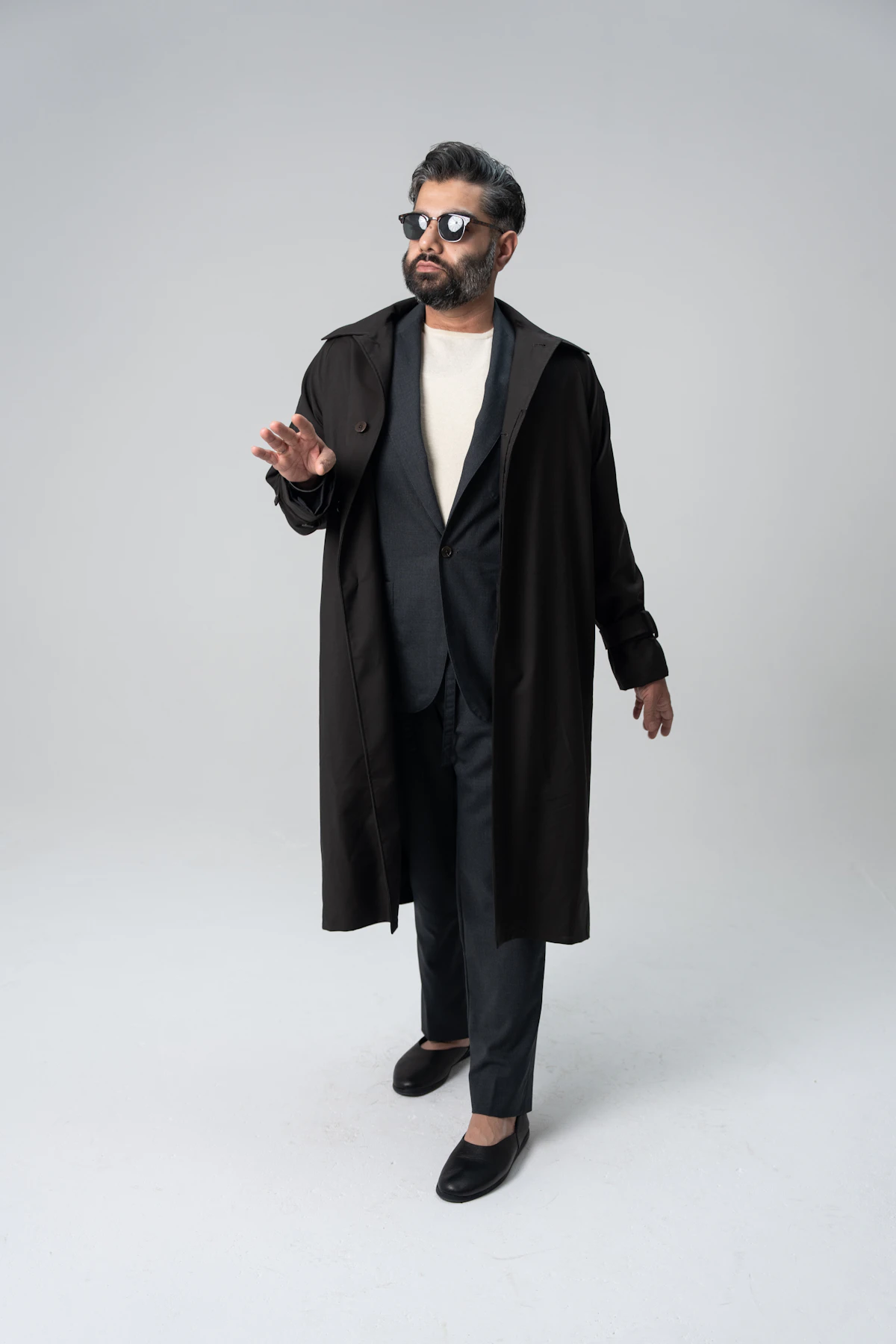Was this a sudden shift, or something more gradual?
I grew up in the Hindu faith and often also the Sikh faith. I grew up during service in the Hindu temple and when we were little kids, we would pour water at the end of the communal food line and the grownups would serve the food. My cousins and I would vacuum the temple in Flushing at the end of the night. Over the last ten years, I had an interest in spirituality, but I’d say in the last year it really connected in a different way where I’ve really kind of handed myself over to faith and it’s really been good. I started going to the Sikh temple, the Gurdwara, every Sunday, and working in the kitchen. So, you know, yesterday, I cut a bunch of lettuce and onions and tomatoes and cucumber and made a whole lot of salad for the community. There’s free food available for anyone that wants it every day in the Gurdwara. I swept the floor and the fire alarm kept going off. So when the fire guy came over, I helped translate between the folks in the temple and him.
But yeah, it’s really nice. I love chopping vegetables, it’s really meditative for me to just keep my mind off other things, and then spend some time with the aunties in there. I listen to the prayer and the live music, and eat this food made with love. I’ve prayed for others historically more so than I’ve prayed for myself, but I pray that I be sound of mind and body so I can give back to my family and the community, it’s a good place to be.
It’s like, over the past ten years I kept calling God, or, you know, whatever the magic white guy in the sky is, and eventually, a year ago or so, they finally picked up. There have been times where I’ve haven’t felt it as much. But there were other times where it’s been there with me, and it’s been really good for healing and dealing with trauma and anxiety, and really just surrendering and going along with the ride. It’s pretty chill. It’s not too hardcore or anything. It’s kind of vibey.
I think I picked up on that when you were really highlighting the chopping of vegetables. There’s like a lot of technique involved, especially with something like an onion. You have to chop it a certain way to keep yourself from crying.
10,000 hours? I’m putting it in.
You worked at Spotify for a while, so I’m interested in hearing about your time there, especially as someone who’s a musician. How sustainable is the DSP model? How do you think it could be better? Should we shift to something else?
I’m teaching a course at the Clive Davis institute at NYU next semester on DSPs as an emerging market. From the artist’s perspective… there are definitely issues with Spotify. But I myself, even without being put on Spotify’s editorial playlists, I feel like I’ve benefited from it more than, say, the Pirate Bay model. I own my own masters, so I’m not giving up like 80 percent [of revenue] to someone else, and there’s money to be made.
Having worked there, I can say that as far as how curation works, it was often up to each individual curator rather than some overarching strategy. For me, I was looking at things like, am I curating mostly males? Am I curating mostly Warner/Sony/Universal artists, or is there an equal share of independent labels that are on my playlists? Am I curating an equal spread of people with under 1,000 followers vs. under 10,000 followers vs. 100,000 followers? There was nothing that made me happier than seeing somebody go from [having] under 1,000 followers to the cover of a playlist—not as something I could take credit for, something that I enjoyed being a part of.
My role at Spotify was in a short-lived group called Global Cultures where our mandate, if you will, was to take local genres—Punjabi music, Afrobeats, music from West Asia aka the Middle East—and bring that to global audiences, both [in terms of] the diaspora and Western audiences. We constantly heard this idea of, like, “We want a million people to live off their music,” and that might just be like lip service from the higher-ups, but it’s something that as a curator and a fan of music, I enjoyed contributing to. It’s complicated, because it’s not really a quantifiable goal. Because what does it mean to live off your music? But that is something I’m proud to have contributed my time and effort to. In 2019, they ended our group. I do think these DSPs are often more involved in or more committed to taking Western music and exporting it to local audiences. It should be a two-way street.
Spotify was a great place to work on a personal level. Swedish people know how to do it—nine months’ paternity leave… I was trying to have a kid just so I could take off from work, bro. [laughs] I worked around a lot of intelligent people that were passionate about music. But at the same time, it was a tech company, and the amount you actually talked about music… you listened to a lot of music, you curated a lot of music, you were around a lot of music, but those conversations are not the same conversations you and I might have socially about music. It was definitely more about the other things.
And then on the other side of that equation, how do you balance your instincts as a marketer with those you have as an artist? Is there a tension at all between showcasing your self-expression and passion vs. thinking about how to successfully get that same work in front of people?
One of the things that has always helped me is that I don’t actually think of them as two separate things. Often in the process of creating music, I am thinking about not necessarily whether the audience will like it, but how I would roll it out. And a lot of what benefits me in terms of marketing is this subconscious ability to think about it in the writing process. I think Michael Jordan said something about, like, when I’m playing, I’m playing for that one person in the audience who’s never seen me play before. And for me, if I’m putting together bars… I mean, rap music is hyper-referential, right, so you’re talking about a lot of different things at once. And I think that the average listener is not going to walk away with 25 reference points, but they’re going to walk away with, like, three that resonate with them. In the process of writing, I’m loosely tying together these reference points and also thinking about who that line might resonate with. And therein thinking about what the audience segment or demographic is—it’s not something that’s front of mind, but I think subconsciously, it’s all part of one one thing. I might say, “These are the songs for Das Racist fans, these are the songs for Heems fans that like underground rap, these are the songs for the diasporic fans who know me from Swet Shop Boyz, and these are more me experimenting and creating for myself.”
But ultimately, you find that it does resonate with someone because you kind of create these songs alone, from almost an antisocial place, but then when you release them you realize that human nature is bigger than any personal uniqueness. That’s all part of it. I enjoy the rollout, I enjoy thinking about the album art, the videos, how to integrate all of this into one world—I think just dropping music can fall flat, but if you’re really creating a world around it and inviting like the listener into it, then that’s a much better place to come from. That’s also why the Veena album is a part of this world of the Veena brand. I think the average listener isn’t so much just a music fan now; they’re really a cultural consumer. And I’d like to meet my fans in flows, fashion, and food—those are the three things that Veena focuses on.


